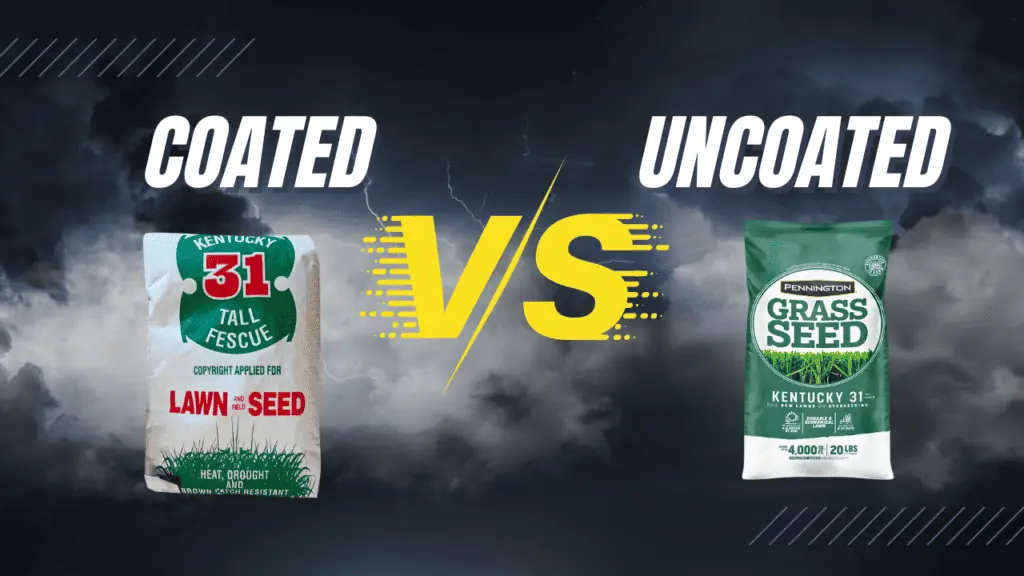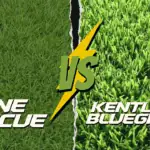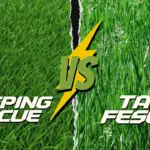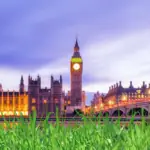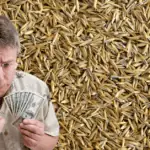The Kentucky 31-tall fescue (also known as KY 31) is one of the most popular lawn grasses in the US, thanks to its beauty, drought tolerance, and adaptability. As a homeowner, you must decide whether to buy coated or uncoated when buying the Kentucky 31-tall fescue seed.
Both seed types are okay and will grow well if you tend to them well, but they have their strength and weaknesses, or advantages and disadvantages, as you would like to put it.
This article will educate you on all you need to know about Kentucky 31 tall fescue coated Vs. Uncoated. You’ll understand all you need to know about both seed types and which one you should buy.
About Coated Kentucky 31 Tall Fescue
Coated Kentucky 31-tall fescue is simply a type of grass seed with a layer of material added to it. The material added to this seed can be clay or a mixture of rhizobia, nutrients, and pesticides.
You can differentiate coated KY 31 from uncoated ones due to their color. Uncoated grass seeds usually come in brown. However, depending on the coating material, coated seeds can come in many colors.
Kentucky 31 tall fescue are coated because of their advantages, but they can also have disadvantages. The subsequent sections will educate you on the advantages and disadvantages of coated KY 31 tall fescue.
Advantages of Coated Kentucky 31 Tall Fescue

It Retains Moisture
Coated Kentucky 31-tall fescue can hold moisture tighter and better, which can be advantageous if you live in dry areas. This moisture-retaining feature would help their germination process.
It Contains Fertilizer
Coated Kentucky 31-tall fescue sometimes contains fertilizer, which helps it germinate. However, this fertilizer might be of small proportion and won’t be sufficient for the entire germination period. You still need to fertilize the grass for the best results, but not as much as the uncoated seeds.
It Enhances Broadcasting
Coated seeds allow for more efficient broadcasting thanks to their color. When you work with uncoated seeds, the brown color might blend with the soil, making it difficult to determine the appropriate amount you’ve sown per square foot. The usually revealing color of the coated seeds will make it easier to know where you’ve planted them, making broadcasting easier.
It Protects Your Seeds from Diseases
Your grasses will experience heightened protection from diseases if you purchase seeds that have fungicide as part of the coating material. The fungicide will work will the one you manually apply to the plant to ensure the best protection. Understand that you should reduce the fungicide you manually add to the seedlings to achieve the best results.
These are some advantages of coated Kentucky 31-tall fescue. As mentioned earlier, there are also some disadvantages that you should watch out for. The following section will touch on those disadvantages.
Disadvantages of Coated Tall Fescue
They Introduce Harmful Substances to Your Soil
Coated KY 31 seeds can add unhealthy substances to your soil. However, the coating materials won’t pose much threat if you buy quality ones.
You should conduct regular soil inspections and maintenance to check whether or not your soil is in good condition. If the soil engineer discovers unhealthiness, confirm if it’s related to the coating material. Use uncoated seeds if your soil quality reduces because you use coated seeds.
Coated Seeds Are More Expensive
Coated seed bags usually sell cheaper than their uncoated counterparts because they contain lesser seeds. However, you’ll need to buy more bags to cover more ground. The reason is that the percentage of seeds in each coated bag is lesser because of the coatings.
Therefore, in an area where one uncoated bag will work, you might need to buy one and a half or two bags of coated seeds.
They Don’t Work Well with Clay Areas
Most seed coatings contain clay, and this extra clay can be problematic if you’re working with clay areas. It would take a toll on your plant’s breathability and drainage.
That concludes all you may need to know about coated Kentucky 31 tall fescue and its pros and cons. The subsequent sections will educate you on the uncoated ones and which one of the two is worth your money.
About Uncoated Kentucky 31 Tall Fescue
Uncoated KY 31 is raw seeds without any form of coating materials. It’s the most common type of seed and doesn’t have any of the “coated” advantages. Also, it doesn’t have any of its disadvantages.
However, uncoated seeds have unique pros and cons, which the subsequent sections will explain.
Advantages of Uncoated Kentucky 31 Tall Fescue
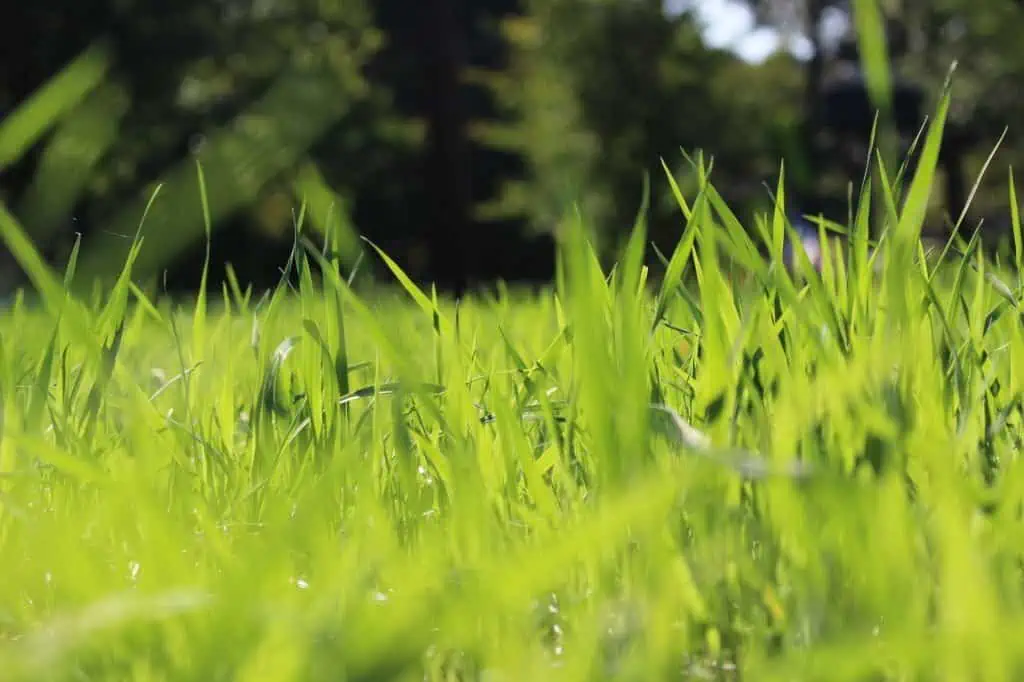
It’s Cheaper
Uncoated seeds are cheaper because you don’t need to pay for any coating material. Also, you get pure seeds in the bag, which means you’re getting value for money regarding the coverage.
You can buy a one-pound bag in an area where it’s needed, and the grasses will germinate fine, providing you care for them properly. It’s also easier to calculate the amount you need for your area, thanks to the fact that there isn’t coating material present.
It’s Suited For Clay
You don’t need to worry about whether or not the seeds would germinate well on clay because there’s no coating to hinder them. If you plant when the time’s right and care for it properly, it’s only a matter of time before those lovely fescues grow.
It’s Better for Your Soil
Stick with uncoated seeds if optimal soil health is your priority. It’s free of potentially harmful material that could make it unsafe for your soil.
Disadvantages of Coated Kentucky 31 Tall Fescue
It Can Lead to Reduced Germination Rates
Uncoated seeds can’t retain moisture as much as their coated counterparts. Therefore, you might need to pay more attention to their care if you plant them in a dry area. These seeds would need more water than regular to ensure optimal germination.
Risk of Exposure to Disease
Coated seeds aren’t immune to diseases, but the risk of uncoated seeds getting infected is higher. Since the coating isn’t present, they don’t have naturally protective elements like fungicides which can help fight plant diseases.
Broadcasting Issues
Natural Kentucky 32 Tall Fescue seeds can be hard to plant if you’re doing so manually. The small and irregular nature of the seeds might make it hard to spread them evenly over your yard. It could also be hard to know where you’ve distributed them and where you haven’t, leading to more broadcast issues.
These are some disadvantages uncoated tall fescue has over coated ones. The following section will compare and contrast both seed types so that you can know the best ones for your space.
What to Consider when Buying Coated and Uncoated Seeds?
Both coated and uncoated Kentucky 31-tall fescue seeds will germinate well if you care for them properly. The one you should buy depends on your preference, but factors like the size of your property or where you reside can play a huge role. Consider getting coated seeds if you can’t dedicate much time to tending to the seedlings.
The same applies if you reside in dry areas where you won’t be able to water the plants deeply. It’s not the best idea to purchase coated seeds if you have clay soil. You should also avoid coated seeds if you’re the type that cares about the health of your soil in the long run.
Whether you buy coated or uncoated: you must care for them well to germinate properly. Also, understand that there isn’t much difference in the price of both seed types in the long run. Although uncoated seeds are cheaper, you’ll spend more buying fertilizers and fungicides.
Conclusion
That concludes all you need to know about coated and uncoated Kentucky 31 tall fescue. Both seed types have pros and cons, and you should carefully evaluate them to select the one that suits you.
Go for high-quality seeds if you want to buy coated or uncoated ones. No matter the type you buy, you won’t be able to get the best out of them if they’re poor quality.
